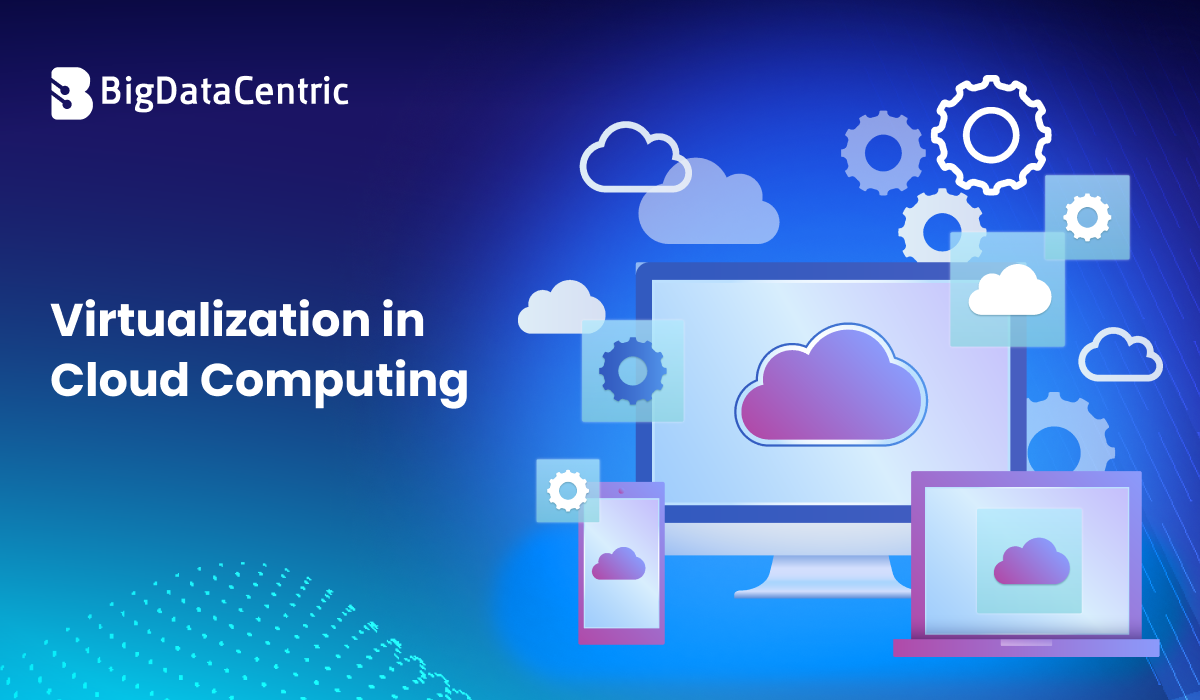Get in Touch With Us
Submitting the form below will ensure a prompt response from us.
One of the most common questions in cloud architecture is: “Is virtualization necessary for cloud computing?” While virtualization and cloud computing are closely related, they are not the same. Virtualization enables the creation of virtual environments, while cloud computing delivers on-demand resources through the internet.
Let’s break down how virtualization in cloud computing relates and whether it is a strict requirement.
What is Virtualization?
Virtualization is the process of creating multiple simulated environments or virtual machines (VMs) on a single physical machine using a hypervisor. It allows businesses to maximize resource usage, run multiple operating systems, and ensure scalability.
Example: Creating a Virtual Machine with Python (using libvirt)
import libvirt
from xml.etree import ElementTree
# Connect to hypervisor
conn = libvirt.open('qemu:///system')
# Define VM XML
xmlconfig = """
<domain type='kvm'>
<name>demo-vm</name>
<memory unit='MiB'>1024</memory>
<vcpu>1</vcpu>
<os>
<type arch='x86_64'>hvm</type>
</os>
<devices>
<disk type='file' device='disk'>
<source file='/var/lib/libvirt/images/demo.img'/>
<target dev='vda'/>
</disk>
<interface type='network'>
<source network='default'/>
</interface>
</devices>
</domain>
"""
# Create VM
conn.createXML(xmlconfig, 0)
print("Virtual machine deployed successfully!")
This script spins up a VM programmatically, showing how virtualization can be automated.
What Is Cloud Computing?
Cloud computing is a service model that delivers computing resources (servers, storage, databases, AI, networking) via the internet. Key characteristics:
- On-demand access
- Elastic scalability
- Pay-as-you-go pricing
- Managed services
While many clouds are built using virtualization, they can also be built on containers (Docker, Kubernetes) or even bare-metal servers.
Relationship Between Virtualization and Cloud Computing
- Virtualization enables cloud computing by abstracting hardware.
- However, not all cloud environments require virtualization.
For example:
- AWS Lambda uses serverless computing, not traditional VMs.
- Kubernetes clusters rely on containers, a lighter alternative to virtualization.
When Is Virtualization Necessary?
Infrastructure-as-a-Service (IaaS):
Virtualization is essential. Services like AWS EC2 or Azure VMs rely on hypervisors to allocate virtual machines.
Platform-as-a-Service (PaaS):
Containers may replace virtualization. PaaS providers often use Docker or container-based orchestration.
Serverless Computing:
Virtualization is not required. Serverless runs code without exposing the underlying VM or container.
Python in Cloud Environments
Developers often use Python scripts to interact with cloud services — whether built on virtualization or not. Example: Deploying to AWS EC2 (virtualized)
import boto3
# Initialize EC2 client
ec2 = boto3.resource('ec2')
# Launch a new EC2 instance
instances = ec2.create_instances(
ImageId='ami-0abcdef1234567890',
MinCount=1,
MaxCount=1,
InstanceType='t2.micro',
KeyName='my-keypair'
)
print("EC2 instance launched:", instances[0].id)
Example: Deploying to AWS Lambda (serverless, no virtualization)
import boto3
lambda_client = boto3.client('lambda')
response = lambda_client.create_function(
FunctionName='MyLambdaFunction',
Runtime='python3.9',
Role='arn:aws:iam::123456789012:role/service-role/my-lambda-role',
Handler='lambda_function.lambda_handler',
Code={'ZipFile': open('lambda.zip', 'rb').read()},
)
print("Lambda function created:", response['FunctionName'])
These examples illustrate how virtualization may or may not be present in the underlying service, yet Python enables deployment seamlessly.
Leverage Virtualization in Cloud Computing
Our experts help you design cloud-native solutions with or without virtualization to meet your business goals.
Conclusion
So, is virtualization necessary for cloud computing?
The answer is not always. While virtualization provides the backbone for many IaaS services, modern cloud models like containers and serverless computing prove that cloud computing can exist without traditional virtualization.
In short:
- Yes, for IaaS-heavy clouds.
- No, for containerized or serverless models.
Cloud is about flexibility and delivery of services — virtualization is just one of the many ways to achieve it.













